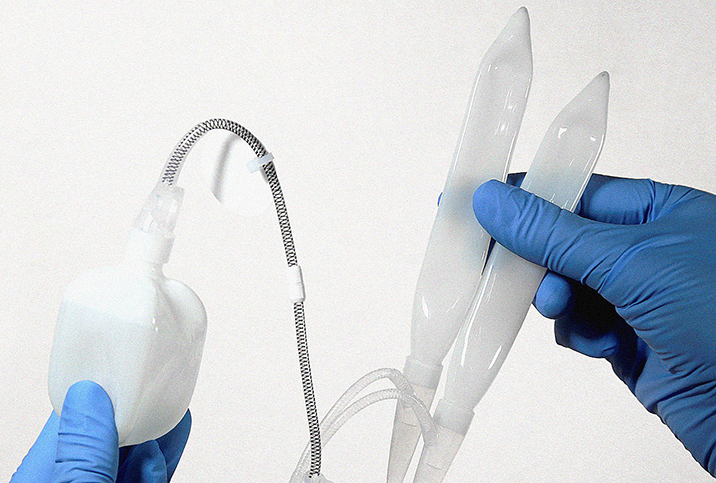Penile Implants: Myths & Misconceptions

Penile implants can help men with erectile dysfunction (ED) achieve an erection, but if you're considering having one placed, you may have some concerns about the surgery and the device.
While an implant isn't a first option for men with ED issues, those who have already tried oral medications and injections to treat their condition may be good candidates for penile implants.
Don't let myths and misconceptions regarding penile implants, and the surgery required to insert them, make the decision for you. Know the facts that debunk the myths, and then make an informed choice.
Myth: I'm probably not a good candidate for a penile implant.
Reality: Most men who are struggling with erectile dysfunction and have experienced less-than-satisfactory results with other modalities, such as oral medication and injections, are likely candidates for penile implants. Once a doctor has gone over your medical history and given you a physical exam, you can talk to them about your expectations and see what's recommended for you.
Giddy Urologist Dr. Edwin Morales explains the different kinds of ED treatments in the ED Guide Video Series. Click here to watch the video.
There are three different kinds of penile implants you can choose from based on your preferences.
Three-piece inflatable implant
The inflatable penile implant is the most popular penile implant and is made up of three parts: inflatable cylinders inside the penis, a reservoir of fluid in the abdomen and a pump in the scrotum. This implant allows you to use the pump to create an erection, and squeeze a valve to move the liquid from the cylinders back into the reservoir to make the penis flaccid.
Two-piece implant
This implant is similar to the three-piece but doesn't include the reservoir of fluid. The fluid is in the pump and moves directly from the pump into the cylinders. The design is simpler, but the erection it creates is less rigid than one with a three-piece implant.
Semi-rigid implant
This implant is the simplest of the three and doesn't require a pump to work. The device is a series of flexible rods that are implanted into the penis. The rods will keep the penis in a semi-rigid state but can be bent outward for sexual activity or bent toward the body for the look of a natural resting state.
If you're unsure of which implant would be best for you, your doctor can make a suggestion based on your age, medical history, health conditions and risk of infection.
Myth: The surgery is more difficult (or easier) than other surgery.
Reality: The surgery typically takes place under anesthesia to minimize pain and discomfort. Only one small cut is necessary in most cases, and the patient is usually able to go home on the same day or after spending a single night in the hospital. Of course, any surgery, no matter how big or small, comes with risk, and those risks—and, yes, the benefits—should be discussed in detail with a urologist. An implant is a foreign body, so there is always the risk of infection and malfunction.
Recovery takes about two to three weeks, depending on the patient. The incision made during the operation should heal in about five days, and any swelling and discomfort should subside within the first week.
You can make the recovery period easier by elevating your scrotum and applying ice to swollen areas. Avoid any heavy lifting or strenuous activity during the recovery period.
Myth: Penile implants are difficult to use.
Reality: Your physician will likely go over the use of the penile implant in their office once you have recovered and are ready to use it. It's recommended that you practice using it at least once per day until you get used to it, but once you've gotten enough practice, using it is easy.
You have control over the implant, but complications can arise. One known complication is "autoinflation," where the implant inflates by itself due to malpositioning from the way the tissue heals, which can sometimes require a follow-up operation to fix. While using implants is fairly easy, know that complications exist.
Myth: My partner will be able to feel my implant.
Reality: Penile implants are invisible and undetectable. No one will know you have a penile implant unless you discuss it with them. Not only can your implant not be felt by a partner, it is also undetectable from the outside. No one will be able to see it, because the implant is concealed within your penis.
Myth: Penile implants hinder desire
Reality: You may be worried that a penile implant will make intercourse less enjoyable, but there's no need for concern. Penile implants won't lower desire or stimulation.
Like a hip or knee replacement, your penile implant will feel like a part of you, and you may not notice it anymore after a few months.
Though penile implants are a fairly invasive treatment for erectile dysfunction, they have a pretty high success rate. Know that complications can arise—autoinflation, discussed previously, is one such complication—but have a discussion with your doctor as to their likelihood (and your comfort with those chances). If you've tried everything else, penile implants may be the treatment that's right for you.

















